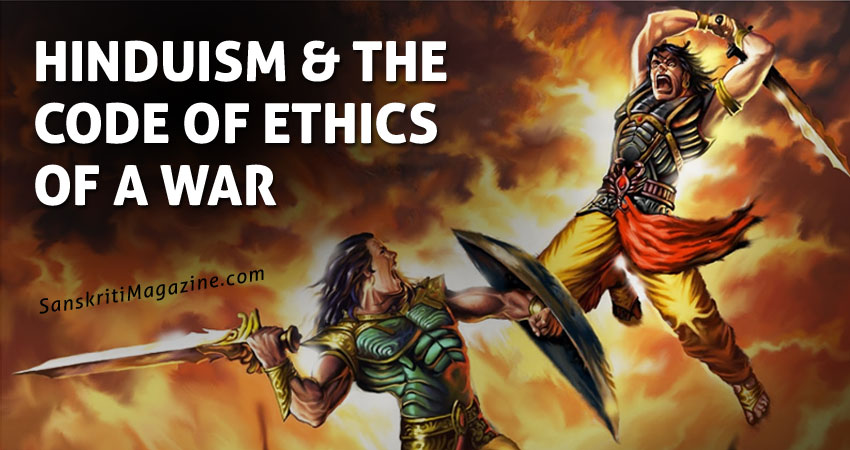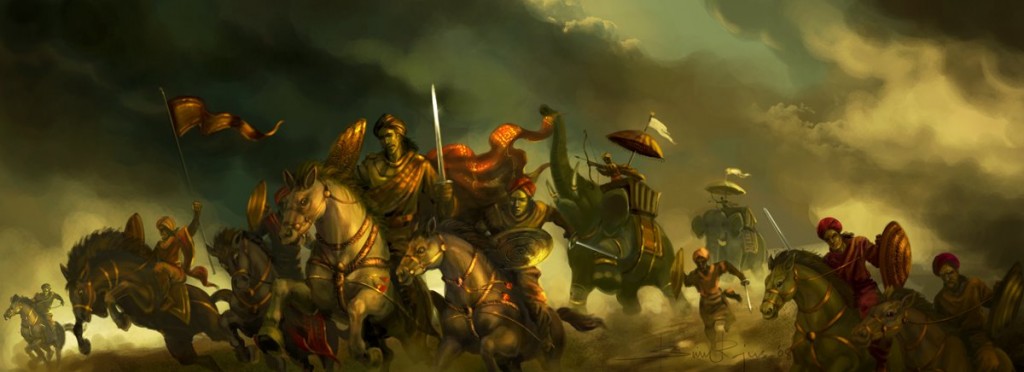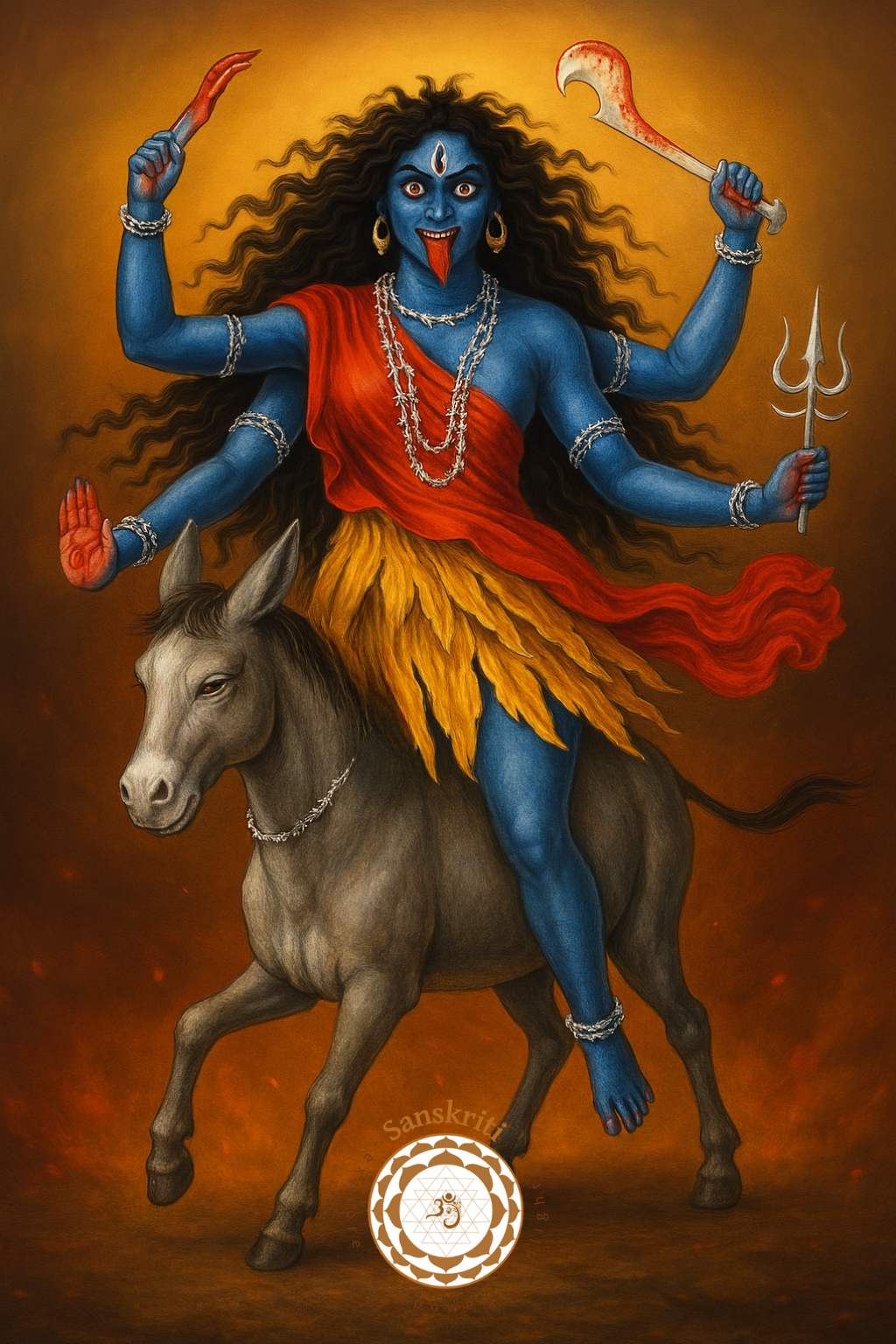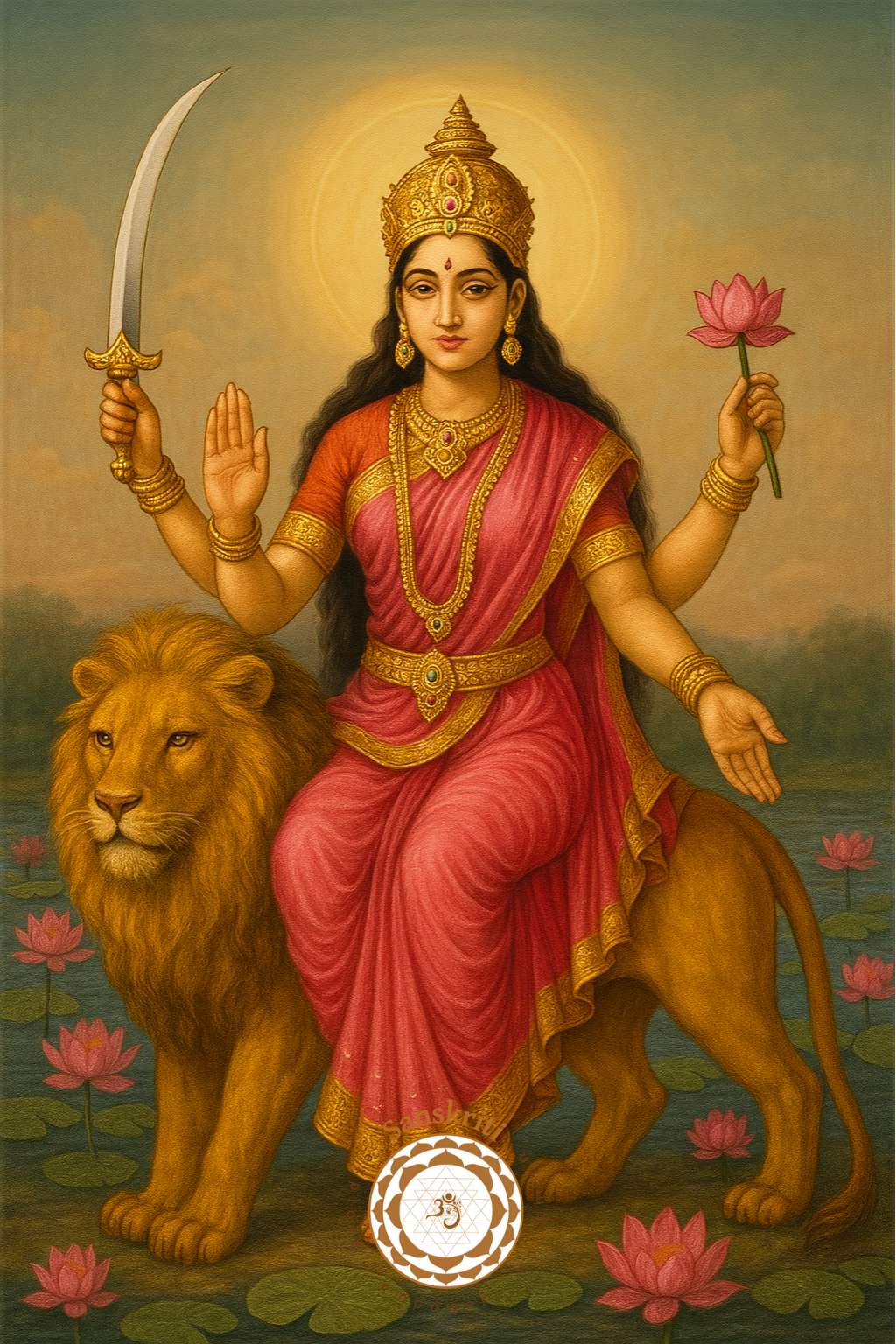“Thou shalt love thy neighbour as thyself because thy neighbour is thyself; God is in both thee and thy neighbour, and both are in God. He who acts in this spirit need not fear that his acts will bind him to further existence.” (1)
The laws of armed conflicts were founded in ancient India on the principle of humanity. The ancient Hindu texts clearly recognized the distinction between military targets, which could be attacked, and non-military persons and objects, which could not be attacked. Warfare was thus largely confined to combatants, and only the armed forces were legitimate targets. It was not allowed to destroy either cities or towns during war. Humanitarian considerations are also a powerful motivating force behind the codification of modern international humanitarian law, (2) the main objective of which is to limit the suffering caused by war. This study explores the contribution of Hinduism to the development of that law.
Sources of Hinduism
Hinduism is a way of life, a Dharma. (3) The word Dharma is derived from the Sanskrit word “dhri” which means “to hold together.” Those who profess the Hindu Dharma and seek to follow it are guided by spiritual, social, legal and moral rules, actions, knowledge and duties which are responsible for holding the human race together. Dharma does not mean religion: it is the law that governs all actions. (4) Hindu Dharma is also known under other names such as Sanatan Dharma (Sanatan means eternal and all-pervading) and Vedic Dharma (Dharma based on the Vedas (5) ).The Hindu religion not only consists of rules encompassing the rights and duties of kings and warriors, but also provides norms of Desa Dharma (6) that govern inter-State relations. (7)
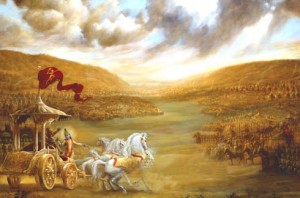 Hinduism is based on numerous texts. Because Hindus are considered to have the authority to introduce new elements and ideas into their religion, countless volumes of commentaries, traditions and teachings exist. (8) The primary sources of Hinduism are Sruti and Smriti. (9) Sruti literally means what is heard, while Smriti designates what is remembered. In this regard, Sruti is revelation and Smriti tradition. Srutis are the four Vedas, the Rig Veda, Sam Veda, Yajur Veda and Atharva Veda. Each Veda consists of four parts: the Samhita (hymn), the Brahmana (rituals), the Aranyakas (interpretations) and the Vedanta (Upanishads). (10) The Bhagavad Gita (“The Lord’s Song”; c. 200 BC), part of the epic poem Mahabharata, is the most influential Hindu text. (11) Manu, Yajnavalkya and Prasara are the most celebrated law-givers of ancient India; (12) the Smritis are named after them. There are eighteen main Smritis or Dharma Sastras. Hindu jurisprudence regards the Smritis as the foundation of law. The epic poems Mahabharata and Ramayana are also a source of law in various situations. (13) The Sruti, Smriti and Dharma Sastras prescribe the rules for society based on Dharma; the laws of war can be singled out from them.
Hinduism is based on numerous texts. Because Hindus are considered to have the authority to introduce new elements and ideas into their religion, countless volumes of commentaries, traditions and teachings exist. (8) The primary sources of Hinduism are Sruti and Smriti. (9) Sruti literally means what is heard, while Smriti designates what is remembered. In this regard, Sruti is revelation and Smriti tradition. Srutis are the four Vedas, the Rig Veda, Sam Veda, Yajur Veda and Atharva Veda. Each Veda consists of four parts: the Samhita (hymn), the Brahmana (rituals), the Aranyakas (interpretations) and the Vedanta (Upanishads). (10) The Bhagavad Gita (“The Lord’s Song”; c. 200 BC), part of the epic poem Mahabharata, is the most influential Hindu text. (11) Manu, Yajnavalkya and Prasara are the most celebrated law-givers of ancient India; (12) the Smritis are named after them. There are eighteen main Smritis or Dharma Sastras. Hindu jurisprudence regards the Smritis as the foundation of law. The epic poems Mahabharata and Ramayana are also a source of law in various situations. (13) The Sruti, Smriti and Dharma Sastras prescribe the rules for society based on Dharma; the laws of war can be singled out from them.
Hinduism and war
In Hindu tradition the spirit of unity and universality extends to the whole world. The Rig Veda declares that “[t]here is one race of human beings,” so the validity of different traditions, religions, indeed of paths to truth, has always been respected. Our guiding principle has been “Sarva Dharma Sambhava (respect for all religions).” (14) In ancient times the first and foremost duty of the king was to protect his people. Protection consisted in countering internal threats as well as external aggression to man’s liberty. (15) Hinduism, like most religions, believes that war is undesirable because it involves the killing of fellow human beings and hence should be avoided as a means of settling disputes. (16) However, it does acknowledge that there might be situations when it is better to wage war than to tolerate evil.
Already in ancient India, the importance and necessity of a standing military force was understood. This recognition subsequently led to the maintenance of a permanent militia to fight off any kind of opposition and aggression. (17) The armed forces were thus also retained in times of peace. Interestingly, it was widely acknowledged that peaceful remedies should be exhausted before having recourse to armed force. Ancient India developed a method in four successive stages for the settlement of disputes between States: the first stage is called peaceful negotiation (sama); the second stage consists of offering gifts (dana) to appease the enemy; the third is a veiled threat (bheda); and the last stage allows the use of force (danda). (18) The clash of arms in battle is therefore clearly undesirable as long as it can be avoided. The policy of conciliation and making gifts should be tried first before engaging in war.
|
WAR ETHICS AND RULES OF ENGAGEMENT IN THE MAHABHARATA |
|
|
1 |
War is to begin at sunrise and end at sunset. |
|
2 |
A single warrior cannot be attacked by multiple warriors. |
|
3 |
Warriors that had the same weapon and mount, i.e., horse, elephant, chariot or on foot can duel with each other. |
|
4 |
A warrior that has surrendered cannot be injured or killed. |
|
5 |
The surrendered warrior becomes a prisoner of war and is subject to the protections allocated to such a warrior. |
|
6 |
An unarmed warrior cannot be injured or killed. |
|
7 |
A warrior with his back turned away from the opponent cannot be injured or killed. |
|
8 |
A person or animal not partaking in the battle cannot be killed. |
|
9 |
An animal in battle cannot be killed unless it is considered a direct threat. |
|
10 |
Each weapon carried in battle came with certain rules that had to be complied with. As an example, it was prohibited to strike the enemy below the waist in a battle with mace. |
|
11 |
The war had to be just and warriors were not to engage in an unjust war. |
|
12 |
Land was not to be harmed in any shape or form. |
|
13 |
Farmers were to be unaffected in a battle and their lives, along with those of women and prisoners of war were considered sacred. |
Types of war in ancient India
The Dharma Sastras and epics recognized two kinds of war: Dharma Yuddha (righteous war), and Adharma Yuddha (unrighteous war). Adharma Yuddha was also known as Kutta Yuddha. (19) Ancient Indian writers enunciated several causes for war, which can be classified in four broad categories: the desire to secure imperial power, either through aggression or through the permitted modes of the Ahwameda or Vajapeya (special kinds of sacrifices); self-preservation; the maintenance of the balance of power; and the prevention by a monarch of the oppression of his people. (20) The theft of a wife was also a cause of war. For example, in the epic Ramayana, Ravana’s abduction of Rama’s wife was the reason for waging war.
The great war described in the Mahabharata was the culmination of deep enmity between two royal clans, the Pandavas and the Kauravas. The Kauravas had unlawfully seized property belonging to the Pandavas. The war began after all negotiations by Krishna and others failed to avert it and it thus became inevitable. The Pandavas were left with two choices: either to fight for their right as a matter of duty, or to evade battle and accept defeat for the sake of peace. Just before the hostilities began the warrior Prince Arjuna, one of the Pandava brothers, asked Krishna to place his chariot between the two sides so that he could take a good look at his enemy. In the enemy ranks Arjuna saw his cousins, other relatives and his teachers. At that crucial moment, Arjuna’s attachment to his family, kinsmen and teachers came to the fore, and doubt entered his mind as to the “righteousness” of the battle. In his confusion, he no longer knew which course of action he should take. He therefore turned to Krishna for guidance, who showed him how to rise above the limitations of his own personality so as to do what was best for himself and good for society. Krishna taught him spiritual wisdom and the means of attaining union with God. The entire seven hundred verses of the Bhagavad Gita are a dialogue between Krishna and Arjuna on the battlefield of Kurukshetra.
In Dharma Yuddha (righteous war) the warrior is morally obliged to do his duty without thought of a possible reward (karmanyevadhikaraste, ma phaleshu kadachan). This single exhortation encapsulates for eternity the entire foundation of military ethics, and its universal relevance remains unchanged in India to this day. The philosophy of Dharma Yuddha has inspired many great people throughout Indian history. In early days the practice was to declare a war, and the Ramayana and Mahabhararta epic poems both stressed the need to do so in the case of a righteous war. The practice of stopping hostilities at sunset and returning to their respective camps to tend more easily to the day’s casualties also dates from very ancient times.
The Manusmriti explains that the three duties of a king were “not shrinking from battle, protecting the people and attending on Brahmans.” (21) If a king (raja) is challenged by his enemies, be they equal, superior or inferior to him, he must engage in battle; he cannot avoid it, bearing in mind the provisions of Kshaatra Dharma (religion of the warrior class), (22) which obliges him to defend himself when attacked. Kshaatra Dharma requires him to take the lead in attacking those who threaten the lives and ways of life of his subjects. Moreover, it demands that he sacrifice his own life if that is necessary to protect the lives of others. (23)
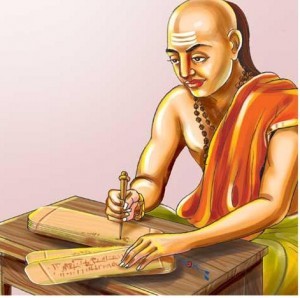 Kautilya’s Arthasastra was one of the greatest political books of ancient India. (24) Kautilya, also popularly known as Chanakya, was the key adviser to King Chandragupta Maurya (317-293 BC). Chandragupta defeated the Nanda kings and stopped the advance in particular of Alexander the Great’s successor Seleucus, preventing him from invading western India. (25) For the first time in Indian history most of the Indian subcontinent was then united in a single empire. (26) In 256 BC, Chandragupta’s grandson Ashoka invaded Kalinga. However, after witnessing the suffering that ensued during the conquest of it, he renounced war and turned to Buddhism and non-violence. (27) Ashoka is now widely regarded as one of the finest kings in world history.
Kautilya’s Arthasastra was one of the greatest political books of ancient India. (24) Kautilya, also popularly known as Chanakya, was the key adviser to King Chandragupta Maurya (317-293 BC). Chandragupta defeated the Nanda kings and stopped the advance in particular of Alexander the Great’s successor Seleucus, preventing him from invading western India. (25) For the first time in Indian history most of the Indian subcontinent was then united in a single empire. (26) In 256 BC, Chandragupta’s grandson Ashoka invaded Kalinga. However, after witnessing the suffering that ensued during the conquest of it, he renounced war and turned to Buddhism and non-violence. (27) Ashoka is now widely regarded as one of the finest kings in world history.
Kautilya counselled that it is best to wage war against an unjust king who has no public support, yet it is wise to avoid war with a righteous king whose subjects will fight vigorously on his behalf. (28) He pointed out that when facing the choice as to whom to attack, it is always best to attack an unjust kingdom. Therefore, a king should march only against an enemy with disaffected subjects. If a king has the option of attacking a strong king who is unjust or a weak king who is just, he should actually attack the stronger king because that king’s subjects, weary of injustice, will not help their ruler and might even join in the war against him.
Ashoka declared that in the future he would conquer only by morality or by Dhamma, which is a Prakrit word meaning right conduct, duty, religion, law, social justice and responsibility. Dhamma was his all-encompassing principle. (29) Ashoka promulgated rock edicts which established the law of piety and non-violence, the most famous of which was the 13th Edict (30) because it highlights his concern to institute the principle of non-violence:
“Beloved-of-the-Gods, King Piyadasi, conquered the Kalingas eight years after his coronation. One hundred and fifty thousand were deported, one hundred thousand were killed and many more died. After the Kalingas had been conquered, Beloved-of-the-Gods came to feel a strong inclination towards the Dhamma, a love for the Dhamma and for instruction in Dhamma. Now Beloved-of-the-Gods feels deep remorse for having conquered the Kalingas. (…) Indeed, Beloved-of-the-Gods is deeply pained by the killing, dying and deportation that take place when an unconquered country is conquered.”(31)
“I have had this Dhamma edict written so that my sons and great-grandsons may not consider making new conquests, or that if military conquests are made, that they be done with forbearance and light punishment, or better still, that they consider making conquest by Dhamma only, for that bears fruit in this world and the next. May all their intense devotion be given to this which has a result in this world and the next.” (32)
In the 10th Rock Edict Ashoka stated plainly that he supported the doctrine of Dhamma for happiness in the next world. He not only forsook violence, but also spread his ideas beyond India.
Thiruvalluvar, the Tamil author of the Thirukkural (“Sacred Couplets”), was born about 30 BC. In the Tamil region this book, which contains numerous poems, is considered equivalent to the Vedas of the Hindu scriptures. The Thirukkural is a renowned work, eulogized as an ethical code of conduct for humanity. The revered poet not only dealt with general administration, but also codified a clear set of rules to govern people’s behaviour in social, political, religious and family circles. The king was advised to avoid taking action which was not moral. (33) A specific warning of relevance today in the Thirukkural is that “to seek to further the welfare of the State by enriching it through fraud and falsehood is like storing water in an unburnt mud pot and hoping to preserve it.” (34) Thiruvalluvar emphasized the role of people whose political and economic support was the prized possession of the king, and the army and its exploits. All the 1,330 hemistichs (two lines of verse) convey simple images of human life. The sacred verses deal very closely with the political and social affairs of life.
However, some of the ancient texts do provide for recourse to unrighteous war for the self-preservation of a State. This position is held, for example, by Sukra in Nitisara. (35) He points out that a weak king has always had problems in maintaining the State. To cope with this situation, Sukra suggests three possible courses of action: a weak king should enter into a peace treaty (sandhi) with his enemy, or resort to Mantra Yuddha (a war of intrigues) or Kutta Yuddha (unrighteous war). (36) The Mantra Yuddha and Kutta Yuddha were adopted to harass the enemy from the rear and all sides so as to devastate his armed forces. Kautilya, in his Arthasastra, mentions three types of war for the benefit of the State: open war; concealed war; and silent war. (37) Although Kautilya acknowledged that open warfare is the most righteous war, he did not speak against waging any of these types of war for the consolidation and expansion of the kingdom; in Adharma Yudda (unrighteous war) a declaration of war was not possible, because it was a secret war.
Hinduism and Humanitarianism
The roots of humanitarianism can be traced back to ancient India, where respect for the laws of war was deeply rooted in the armed forces. Those ancient laws, which were enshrined in the code of law of Manu and his Dharma Sastra (or Manusmriti), established rules for the conduct of rulers towards their people, including, for example, the obligation to treat the vanquished humanely and the prohibition of poisoned weapons. The code of Manu advises the king:
“when he fights with his foes in battle, let him not strike with weapons concealed (in wood), nor with (such as are) barbed, poisoned, or the points of which are blazing with fire.” (38)
Whether he himself fights or engages others to fight for him, the king must ensure that the battle will be an honest duel.
Elsewhere the code of Manu proclaims:
“let him not strike one who (in flight) has climbed on an eminence, nor a eunuch, nor one who joins the palms of his hands (in supplication) nor one who (flees) with flying hair nor one who sits down nor one who says, ‘I am thine’. Nor one who is sleeping, nor one who has lost his coat of mail, nor one who is naked nor one who is disarmed nor one who looks on without taking part in the battle nor one who is fighting with another foe.” (39)
Great importance was attached to distinguishing between combatants and non-combatants during war. According to Manu:
“persons walking on the road, not participating in the conflict, or mere travellers, or those who are engaged in eating and drinking or pursuing their special avocations or activities or diplomatic errands and of course the Brahmins, unless they are engaged in war, were not to be killed.” (40)
The principle of distinction
The laws of war in ancient India drew a clear distinction between civilians and belligerents. That same principle is found in Article 48 of Additional Protocol I, (41) while Article 51 thereof protects civilians from military operations. (42) Manu also laid down certain principles that should be followed by both warring parties. (43)
For example, combat between mounted and unmounted soldiers was strictly forbidden. Furthermore, combat between warriors of officer rank and foot soldiers were not allowed, since the former would generally be much better armed and trained than the latter. Collective attacks against a single soldier and the slaying of a warrior who was temporarily at a disadvantage during battle were strictly prohibited.
According to the Manusmriti, only the warriors who actually fight in the battle can take the spoils of war. Yet they are to be shared with the ruler inasmuch as the kings who have engaged them to settle scores with the enemies demand the best part of the booty. (44) In this connection, the conqueror is advised to grant remissions on taxes instead of looting the conquered territory. He must seek to win over the commoners of conquered territory and not do anything that would increase their bitterness. He should not be vengeful but should instead offer an amnesty to all who have surrendered to him. (45)
The Rig Veda also laid down the right conduct of war. Vedic rules maintain that it is unjust to strike someone from behind, cowardly to poison the tip of the arrow and heinous to attack the sick or old, children and women. The Ramayana describes an interesting discussion between Ravana and his brother Vibhishana about the inviolability of an ambassador. Ravana planned to kill Ambassador Hanuman, who appeared at his court on behalf of Rama. His brother Vibheeshana reminded him that if he did kill the ambassador, he would be acting against Raj Dharma (the duty of kings). (46)
The Ramayana tells another interesting story in the course of epic war: an ultra-destructive weapon became available to Lakshmana, the younger brother of Rama, which could destroy the entire enemy race, including those who could not bear arms. (47) Rama advised Lakshmana that the weapon could not be used because such mass destruction was forbidden by the ancient laws of war, even though the enemy, Ravana, was fighting an unjust war with an unrighteous objective. (48)
A similar story is related in the epic poem Mahabharata: Arjuna, observing the laws of war, refrained from using an ultra-destructive weapon in a conventional war, for when fighting was restricted to ordinary conventional weapons, the use of extraordinary or unconventional types was immoral, besides contravening religious tenets or the recognized laws of warfare. (49) The Agni Purana clearly mentions that prisoners of war should not be enslaved. If soldiers were taken prisoner, they were to be released at the cessation of hostilities.
Kautilya advocated the humanitarian treatment of conquered soldiers and citizens. In particular, he maintained that a humanitarian policy toward a defeated people was practical, pointing out that if a king massacres those whom he has defeated, he frightens all the kingdoms that surround him and terrifies even his own ministers, (50) whereas more land and loyal subjects can be gained if the defeated are treated magnanimously. Kautilya advised that the conquering king should order the release of all prisoners and give help to the distressed, the helpless and the sick. He thus called for the establishment of a righteous course of conduct for sound military policy. (51) In taking this stance, Kautilya was following the traditional advice given in the Dharma Sastras that Aryans (52) condemn the killing of those who have thrown down their weapons, who have dishevelled hair, who fold their hands in supplication, or who are fleeing. He states that the just conqueror is satisfied with the obeisance of the defeated ruler. (53)
Kautilya also held that the fundamental rule about immoveable property was that it did not belong to the victor by right; only such things as chariots, animals, and war material belonged to the conquering forces. The king should personally examine all such captured wealth and should then keep a part for himself and distribute the rest among his armed forces according to rank. (54)
A conquering king should reassure a defeated people that not much has changed except their rulers. He should adopt a character, dress, language and behaviour similar to when the former king was ruling (similar to those of the subjects). Moreover, he should show the same devotion at festivals in honour of deities of that country, festive gatherings and sportive amusements. (55) He should honour the local deities and make grants of land and money to men distinguished in wisdom and piety. The conquering king should show his goodwill toward the defeated by instituting a righteous custom that had not previously been introduced. Kautilya commented that “one must kill a dangerous person; however, the king must leave his property untouched and shall not appropriate the land, property, sons or wives of the killed one.” (56) The laws of war in ancient India with regard to occupied territory were more humane and broader than those of international humanitarian law today.
It is sufficiently clear that in terms of the ideals of humanitarianism of ancient India the laws of war were more progressive. The modern laws of war were developed mainly by The Hague Peace Conferences of 1899 and 1907, and in the four Geneva Conventions of 1949 and the two 1977 Additional Protocols thereto. India is party to the four Geneva Conventions of 1949 and has incorporated them into its municipal law. (57) Although it did not sign the two Additional Protocols, the non-formal nature of its adoption of them has not hindered the effective implementation of international humanitarian law in India.
Hinduism believes that war is undesirable and must be avoided because it involves the killing of fellow human beings. Kautilya notably underlines the importance of negotiations between sovereigns who play a considerable role in the conclusion of alliances and in issues pertaining to war and peace. Specifically, kings were requested, before resorting to war, to have recourse to negotiation as the principal means of resolving conflicts. Kautilya’s Arthasastra defines war as an offensive (objectionable) operation. The Sukranitisara, Agni Purana and other works of earlier days hold more or less similar positions. For moral and economic reasons, the policy of exhausting peaceful remedies before resorting to war was advocated by most of the ancient writers.
War is justified only when it is meant to fight injustice, not for the purpose of aggression or to terrorize people.
~ Prof. (Dr.) Manoj Kumar Sinha, Author, Professor of Law at the WB National University of Juridical Sciences, Kolkata. He has been elected as Secretary of All India Law Teachers Congress in year 2011 and again in 2013 for fourth time in a row.
References:
1 The Bhagavad Gita
2 The humanitarian principles are largely articulated in The Hague Conventions of 1899 and 1907 and the four Geneva Conventions of 1949 and their two Additional Protocols. For the texts see Handbook of the International Red Cross and Red Crescent Movement, ICRC, Geneva, 1994.
3 K. R. R. Sastry, “Hinduism and international law”, Recueil des Cours, 1966 (I), Vol. 117, pp. 507-614.
4 Ibid.
5 The Vedas, philosophical teachings written by ancient inhabitants of India, serve as the foundational texts of Hinduism.
6 The word Desa Dharma combines two words of Sanskrit, Desa, which means land, and Dharma, which means duty.
7 C. J. Chacko, “India’s contribution to the fi eld of international law concepts”, Recueil des Cours, 1958 (I), Vol. 93, pp. 121-221.
8 See generally, Lakshmikanth Penna, “Traditional Asian approaches: An Indian view” Australian Yearbook of International Law, 1985, Vol. 9, pp. 168-206.
9 Ibid., pp. 176-181.
10 Ibid.
11 Surya P. Subedi, “The concept in Hinduism of just war”, Journal of Peace and Conflict Studies, 2003, Vol. 8, pp. 339-361.
12 Chacko, op. cit. (note 7), p. 124.
13 See in general Penna, op. cit. (note 8), pp.168-206.
14 The support for the principle of sarva dharma sambhava can be found particularly in the words of Krishna in the Bhagavad Gita: “Whosoever desires to worship whatever deity (using whatever name, form, and method) with faith, I make their faith steady in that very deity.”
15 Pandurang Varman Kane, History of Dharmasastra, Poona, 1973, Vol. 3, p. 56.
16 A. L. Basham, The Wonder that was India, Grove Press, New York, 1954; Percival Spear, A History of India, Penguin, London, 1956; Romilla Thapar, A History of India, Penguin, London, 1966.
17 Sastry, op. cit. (note 3), pp. 566-70.
18 Ibid., pp. 507-10.
19 Ibid., p. 568.
20 Chacko, op. cit. (note 7), pp. 122-124.
21 V. Nagarajan, “Manusmriti as Socio-political Constitution”
22 Ibid.
23 Ibid.
24 C. H. Alexandrowich, “Kautilyan principles and the law of nations”, British Yearbook of International Law, 1965-66, Vol. 41, pp. 301-320.
25 Romila Thapar, The Mauryas Revisited, K. P. Bagchi Company, Calcutta, 1987.
26 Ibid.
27 Gerald Draper, “The contribution of the Emperor Asoka Maurya to the development of the humanitarian ideal in warfare” International Review of the Red Cross, No. 305, 1995, pp. 192-206; Romila Thapar, Asoka and the Decline of the Maurya, Oxford University Press, Delhi, 1997.
28 Roger Boesche, Kautilya’s Arthasastra on War and Diplomacy in Ancient India,
29 Thapar, op. cit. (note 27).
30 Edicts of Asoka
31 Ibid.
32 Ibid.
33 Sastry, op. cit. (note 3), p. 530.
34 Ibid., p. 530.
35 Ibid., p. 132.
36 Chacko, op. cit. (note 7), p. 138.
37 Boesche, op. cit. (note 28).
38 V. Nagarajan, op. cit. (note 21).
39 Ibid.
40 Ibid.
41 Handbook, op. cit. (note 2), p. 223.
42 Ibid., p. 224.
43 Penna, op. cit. (note 8), pp. 180-191.
44 Ibid.
45 Ibid.
46 Chacko, op. cit. (note 7), pp. 126-128.
47 Penna, op. cit. (note 8), pp. 191-192.
48 Ibid.
49 Ibid.
50 Boesche, op. cit. (note 28).
51 Alexandrowich, op. cit. (note 24), pp. 301-320.
52 The word Aryans is derived from the Sanskrit word ‘arya’ which means noble.
53 Boesche, op. cit. (note 28).
54 Ibid.
55 Ibid.
56 Ibid.
57 V. S. Mani, “International humanitarian law: An Indo-Asian perspective”, International Review of the Red Cross, No. 841, 2001, pp. 59-76.

